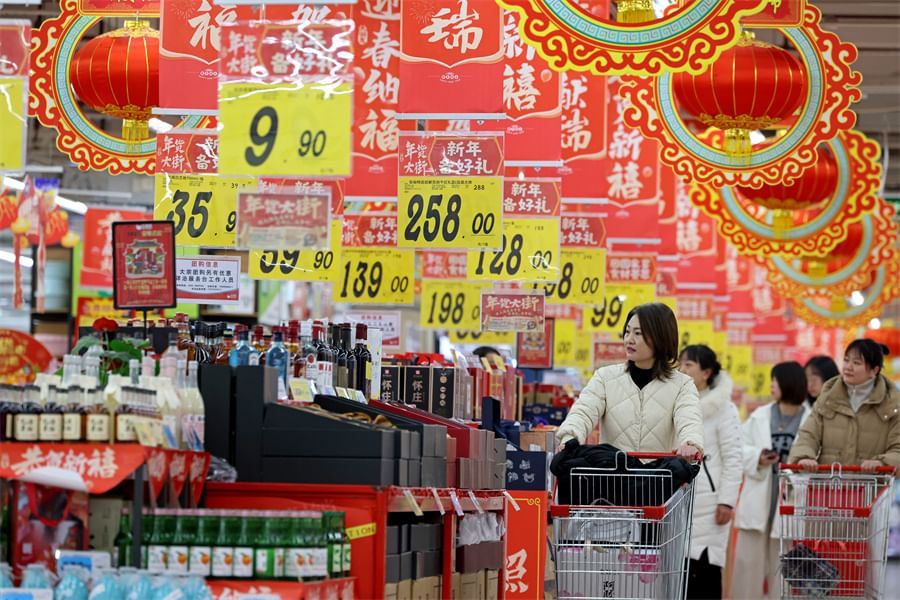China’s consumer prices showed a slower decline in March, while factory-gate prices continued to fall at a deeper rate, according to official data released on Thursday.
The country’s Consumer Price Index (CPI), a key measure of inflation, decreased by 0.1% year-on-year in March, an improvement from February’s 0.7% drop, as reported by the National Bureau of Statistics (NBS).
Food prices within the CPI category dropped by 1.4% year-on-year, a smaller decline compared to February’s 3.3% decrease. On a month-on-month basis, the CPI fell by 0.4% in March, following a 0.2% decline in February.
Core CPI, which excludes volatile food and energy prices and offers a clearer reflection of the supply-demand balance in the economy, saw a 0.5% year-on-year increase in March, rebounding from a 0.1% dip in February.
Dong Lijuan, a statistician from the NBS, attributed the month-on-month CPI decrease to several factors, including an abundant food supply due to warmer weather, lower prices for travel-related services in the off-season, and decreasing international oil prices.
Dong also pointed to some encouraging trends, such as the narrowing decline in the year-on-year CPI and the rise in core CPI, suggesting that consumer demand-boosting policies were beginning to show results and the effects of the Spring Festival holiday timing had started to fade.
In contrast, China’s Producer Price Index (PPI), which tracks factory-gate prices, fell by 2.5% year-on-year in March, deepening from a 2.2% drop in February, according to the NBS. Month-on-month, the PPI dropped by 0.4% in March, after a 0.1% decrease in February.
Dong explained that the decline in factory-gate prices was driven by lower domestic petroleum prices, weaker demand for energy products like coal, and falling prices of various raw materials in export-oriented industries.






